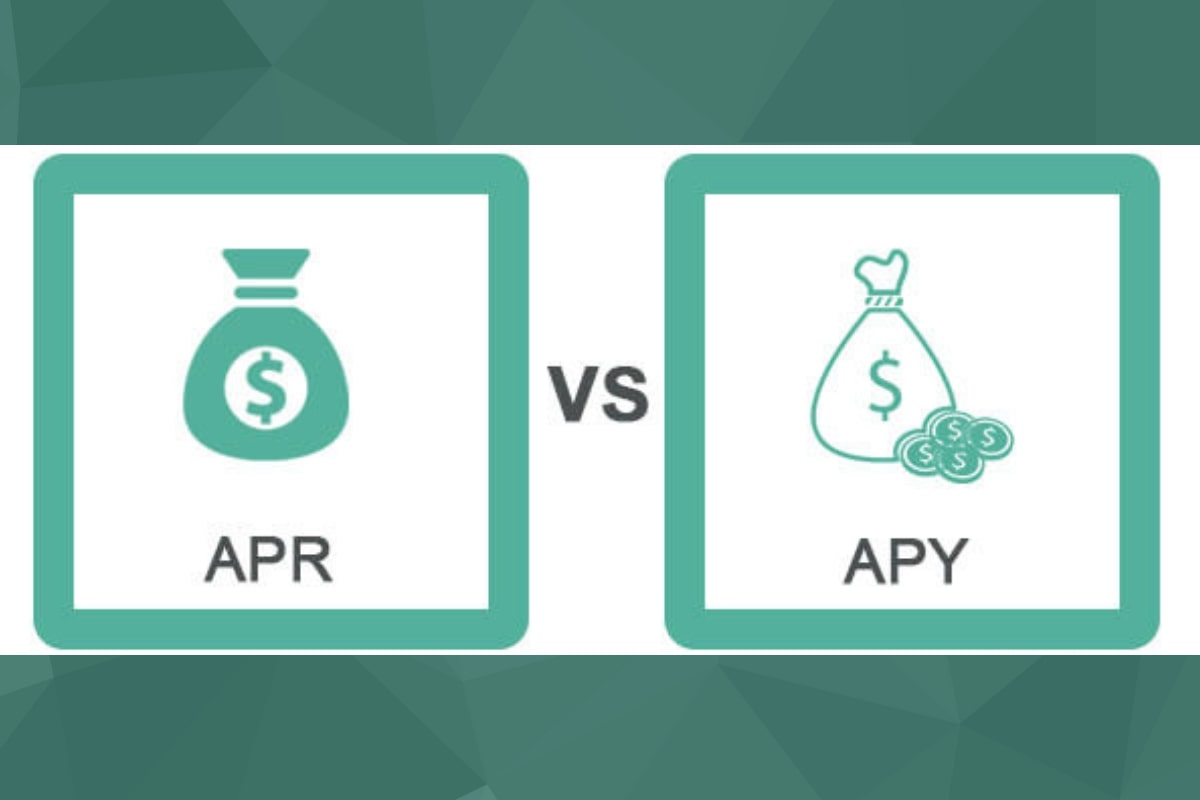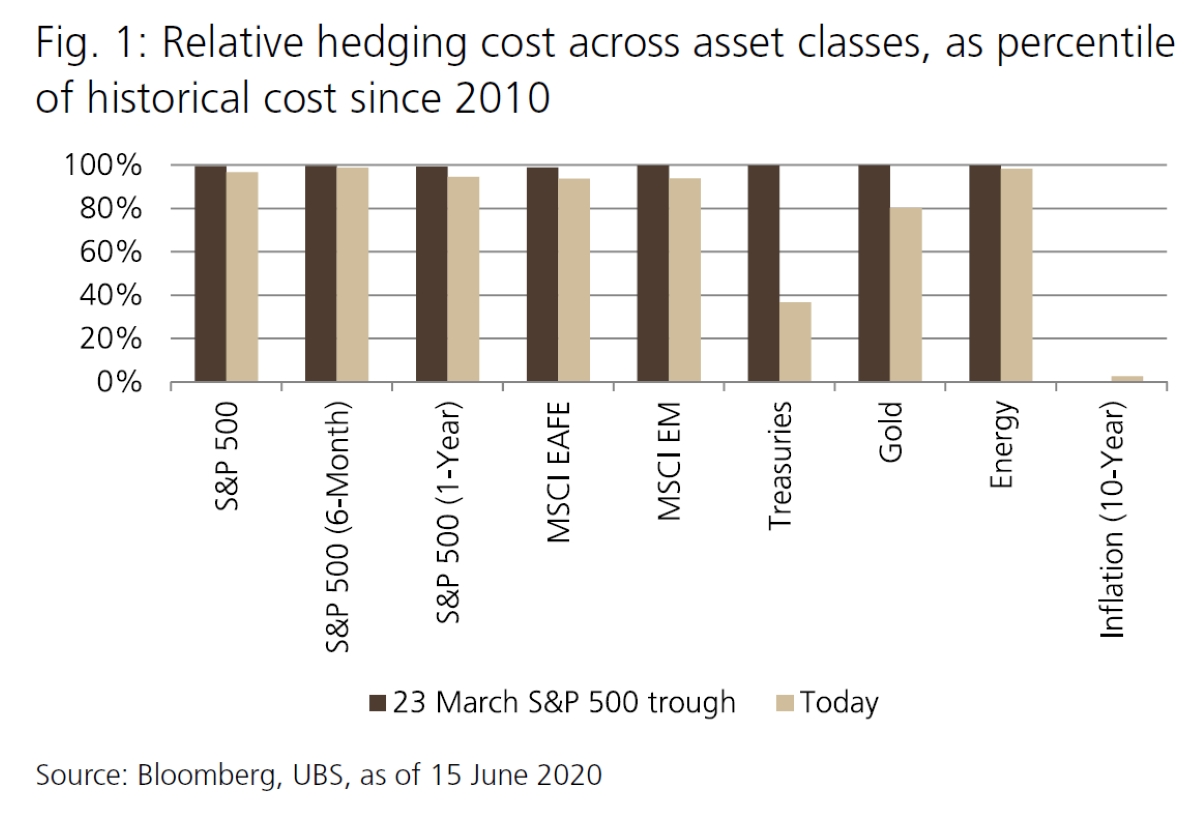

Finance
What Is Hedging In Crypto
Published: January 15, 2024
Learn all about hedging in crypto, a strategic financial practice that helps minimize risk and safeguard investments. Explore the benefits and techniques of crypto hedging in this comprehensive guide.
(Many of the links in this article redirect to a specific reviewed product. Your purchase of these products through affiliate links helps to generate commission for LiveWell, at no extra cost. Learn more)
Table of Contents
Introduction
Hedging is a concept that has been practiced in traditional financial markets for decades. It involves taking strategic positions to offset potential losses or risks associated with an investment. With the rise of cryptocurrencies, hedging has become an essential tool for managing risk and protecting investments in the volatile crypto market.
Crypto hedging allows investors to minimize their exposure to price fluctuations and to safeguard their portfolios from potential losses. By utilizing various hedging strategies, crypto investors can mitigate the risks associated with market volatility and secure their investments.
While the crypto market can offer significant returns, it is also notorious for its extreme volatility. Prices can fluctuate wildly in a matter of minutes or even seconds, making it challenging for investors to predict market movements accurately. This unpredictability presents a significant risk, especially for those with large crypto holdings.
Fortunately, hedging techniques in the crypto market can help investors navigate these volatile conditions. By implementing certain strategies, investors can reduce their exposure to price volatility and protect their assets from potential losses. In this article, we will explore the concept of hedging in the crypto market and discuss some popular hedging strategies employed by crypto investors.
It is essential to note that hedging in the crypto market is not foolproof and does not guarantee profits. However, it can help investors manage risk and minimize potential losses. Let’s dive deeper into the different types of hedging strategies used in the crypto market and examine their benefits and risks.
Definition of Hedging in Crypto
Hedging in the crypto market refers to the practice of mitigating or managing the potential risks and uncertainties associated with cryptocurrency investments. It involves taking strategic positions or entering into specific financial contracts with the aim of offsetting potential losses that may arise from adverse market movements.
The primary objective of hedging in the crypto market is to protect investors from significant price fluctuations and volatility. By hedging their positions, investors aim to minimize their exposure to potential losses caused by unexpected market events or sharp price movements.
Unlike traditional financial markets, the crypto market operates 24/7 and is highly volatile, with prices fluctuating rapidly. This makes it challenging for investors to accurately predict market movements and can lead to considerable financial losses. Hedging provides a mechanism for investors to reduce risk and manage their exposure in this dynamic and unpredictable market.
One of the key features of crypto hedging is that it allows investors to establish positions that are inversely correlated to their original investments. This means that if the value of their primary investment decreases, the value of their hedging position will increase, effectively offsetting their losses.
There are various strategies and financial instruments available for hedging in the crypto market, including futures contracts, options contracts, margin trading, and decentralized finance (DeFi) hedging strategies. Each of these approaches has its own benefits and risk factors, and investors can choose the most suitable method based on their investment goals and risk tolerance.
It is important to note that hedging in the crypto market does not guarantee profits or completely eliminate risk. The main purpose of hedging is to provide a level of protection against adverse market movements and minimize potential losses. Proper understanding of the different hedging strategies and careful execution is crucial for successful risk management in the crypto market.
Types of Hedging Strategies in Crypto
Hedging strategies in the crypto market aim to protect investors from potential losses caused by price volatility and market uncertainties. There are several effective hedging techniques that investors can employ to manage risk and safeguard their investments. Let’s explore some of the most popular types of hedging strategies in the crypto market:
- Futures Contracts: Futures contracts are widely used in traditional financial markets, and their adoption is growing in the crypto market as well. In a futures contract, two parties agree to trade an asset at a predetermined price and date in the future. By entering into a futures contract, investors can effectively lock in the price of a cryptocurrency, protecting themselves from potential price declines.
- Options Contracts: Options contracts provide investors with the right, but not the obligation, to buy or sell a cryptocurrency at a predetermined price within a specific time frame. Calls provide the right to buy, while puts give the right to sell. Options contracts can be utilized to hedge against downward price movements or to limit losses in case of adverse market conditions.
- Margin Trading: Margin trading allows investors to borrow funds to trade larger positions than their initial capital. While margin trading can amplify potential profits, it also comes with increased risks. However, by carefully managing leverage ratios and setting stop-loss orders, investors can use margin trading as a hedging strategy to limit potential losses.
- Decentralized Finance (DeFi) Hedging: In recent years, decentralized finance (DeFi) platforms have emerged, offering innovative ways to hedge crypto investments. DeFi hedging involves utilizing decentralized derivatives and lending protocols to create synthetic positions that offset risks. These platforms provide opportunities to hedge against specific cryptocurrencies or even create diverse portfolios for risk management.
Each hedging strategy has its own advantages and risk profiles, and investors should carefully consider their investment goals, risk tolerance, and market conditions before deciding which strategy to implement. It is vital to conduct thorough research and understand the mechanics of each strategy to ensure effective risk management.
By implementing appropriate hedging strategies, crypto investors can protect their investments from unpredictable market movements and minimize potential losses. However, it is important to note that hedging does not guarantee profits and should be used in conjunction with other risk management techniques to create a well-rounded investment strategy.
Futures Contracts
In the world of traditional finance, futures contracts are widely used for hedging purposes, and their popularity is growing in the crypto market as well. Futures contracts enable investors to lock in the price of a cryptocurrency at a future date, mitigating the risk of price fluctuations.
A futures contract is an agreement between two parties to buy or sell an asset, such as a cryptocurrency, at a specified price and date in the future. The buyer of a futures contract agrees to purchase the asset, while the seller agrees to sell it. By entering into a futures contract, investors can effectively hedge their cryptocurrency positions and protect themselves from potential price declines.
Here’s how futures contracts work in hedging:
- Long Futures Position: Investors who anticipate a price increase in a cryptocurrency can take a long futures position. By purchasing futures contracts, they commit to buying the asset at a predetermined price in the future. If the price of the cryptocurrency rises, the investor’s futures position will increase in value, offsetting any losses in their original cryptocurrency holdings.
- Short Futures Position: Investors who anticipate a price decrease in a cryptocurrency can take a short futures position. By selling futures contracts, they commit to selling the asset at a predetermined price in the future. If the price of the cryptocurrency falls, the investor’s futures position will gain value, offsetting any losses in their original cryptocurrency holdings.
Futures contracts are particularly useful in the crypto market due to its high volatility. By locking in prices through futures contracts, investors can mitigate the risk of sudden price swings that could negatively impact their investments.
It is important to note that futures contracts come with their own set of risks. If the market moves against an investor’s futures position, they may still incur losses despite hedging their initial investment. Additionally, futures contracts require careful consideration of factors such as expiration dates, contract sizes, and margin requirements.
Furthermore, the availability of futures contracts varies across different cryptocurrency exchanges. Some exchanges offer a wide range of futures contracts for various cryptocurrencies, while others have a limited selection. Investors must choose reputable and regulated exchanges to ensure the safety and reliability of their futures contracts.
Overall, futures contracts provide a valuable hedging tool for crypto investors, allowing them to manage risk and protect their investments in a volatile market. By utilizing futures contracts, investors can hedge against potential losses and create a more stable investment portfolio.
Options Contracts
Options contracts are another popular hedging strategy used in the crypto market. Options give investors the right, but not the obligation, to buy (call option) or sell (put option) a cryptocurrency at a predetermined price within a specific time frame. Options contracts provide flexibility and allow investors to protect their crypto investments from price fluctuations.
Here’s how options contracts work in hedging:
- Call Options: Call options provide the buyer with the right to buy a cryptocurrency at a specified price (known as the strike price) before the option’s expiration. By purchasing call options, investors protect themselves against potential price increases. If the price of the cryptocurrency rises above the strike price, investors can exercise their call options and buy the cryptocurrency at a lower price, mitigating the impact of the price increase on their original holdings.
- Put Options: Put options, on the other hand, give the buyer the right to sell a cryptocurrency at a predetermined price before the option’s expiration. By purchasing put options, investors protect themselves against potential price decreases. If the price of the cryptocurrency falls below the strike price, investors can exercise their put options and sell the cryptocurrency at a higher price, offsetting any losses in their original holdings.
Options contracts offer several advantages in hedging crypto investments. They provide flexibility in terms of choosing the strike price, expiration date, and the right to exercise the option. This flexibility allows investors to tailor their hedging strategy according to their specific risk tolerance and market expectations.
However, it is important to note that options contracts come with certain risks. Unlike futures contracts, options contracts provide the right, but not the obligation, to buy or sell the underlying asset. Therefore, if the market moves unfavorably, investors may choose not to exercise their options, resulting in the loss of the premium paid for the options contract.
Additionally, options contracts have expiration dates, and if the market doesn’t move in the anticipated direction before the expiration, the options may expire worthless. This means that investors need to carefully consider the time frame and the price movements they expect in the market when utilizing options contracts as a hedging strategy.
Options contracts are available on various cryptocurrency exchanges, and their liquidity and availability may vary. Investors should choose reputable exchanges that offer a wide range of options contracts and ensure proper risk management when utilizing options for hedging purposes.
In summary, options contracts provide crypto investors with a powerful tool for hedging against potential losses in the volatile cryptocurrency market. By strategically utilizing call and put options, investors can protect their investments from adverse price movements and create a more robust portfolio.
Margin Trading
Margin trading is a popular hedging strategy in the crypto market that allows investors to leverage their positions and trade larger amounts of cryptocurrencies than their initial capital. By borrowing funds from a cryptocurrency exchange or a lending platform, investors can amplify their potential profits as well as their potential losses.
Here’s how margin trading works in hedging:
When engaging in margin trading, investors are required to deposit a certain percentage of the total trade value, known as the margin, as collateral. This margin acts as a cushion to cover potential losses. The cryptocurrency exchange or lending platform provides the remaining funds required to execute the trade.
Margin trading can serve as a hedging strategy by allowing investors to take positions that offset potential losses in their original cryptocurrency holdings. For example, if an investor holds a significant amount of a particular cryptocurrency and believes its price may decline, they can open a short position (sell) on that cryptocurrency through margin trading. This way, if the price does indeed drop, the profit from the short position can help offset the losses incurred in their original cryptocurrency holdings.
However, it is crucial to exercise caution when margin trading, as it carries higher risks than other hedging strategies. While the potential for higher profits exists, the amplification of losses is also a significant concern. If the market moves against an investor’s position, they may face liquidation, where their entire position is closed due to insufficient margin. This can lead to significant losses.
To mitigate risks while margin trading, it is important to manage leverage ratios prudently and set stop-loss orders to limit potential losses. Proper risk management and a thorough understanding of the market are essential for successful margin trading as a hedging strategy.
Furthermore, it is crucial to choose reliable and regulated cryptocurrency exchanges or lending platforms for margin trading. These platforms should provide adequate security measures to protect user funds and offer transparent terms and conditions.
Overall, margin trading can be an effective hedging strategy in the crypto market when used responsibly. It allows investors to leverage their positions and potentially mitigate losses or amplify profits. However, it is a higher-risk strategy that requires careful consideration, proper risk management, and a deep understanding of the market dynamics.
Decentralized Finance (DeFi) Hedging
Decentralized Finance (DeFi) has revolutionized the traditional financial industry by offering innovative and decentralized solutions on blockchain networks. In the crypto market, DeFi platforms have also introduced hedging strategies that provide alternative methods for investors to manage risk and protect their crypto investments.
DeFi hedging involves utilizing decentralized derivatives and lending protocols to create synthetic positions that offset risks. These platforms allow investors to participate in hedging strategies without relying on centralized intermediaries, providing greater transparency, security, and accessibility.
Here are some common DeFi hedging strategies:
- Synthetic Assets: DeFi protocols allow investors to create synthetic assets that mirror the performance of real cryptocurrencies. These synthetic assets can be used for hedging purposes. For example, investors can create synthetic Bitcoin (sBTC) and open a short position on it to hedge against potential losses in their actual Bitcoin holdings.
- Lending and Borrowing: DeFi lending protocols enable investors to borrow an asset and lend another asset, creating a synthetic position that can be used for hedging. For instance, an investor can borrow a stablecoin and use it to offset potential losses in their cryptocurrency portfolio. By using decentralized lending platforms, investors can customize their borrowing and lending terms to suit their hedging needs.
- Decentralized Options: Some DeFi platforms offer decentralized options trading, allowing investors to hedge against potential price movements. By purchasing or selling options contracts on these platforms, investors can protect their crypto holdings from adverse market conditions.
- Yield Farming Strategies: DeFi also offers opportunities for yield farming, where investors can generate additional returns by participating in liquidity pools and earning governance tokens. Yield farming can be used as a hedging strategy by deploying capital into multiple pools, creating a diversified portfolio that offsets potential losses in one sector with gains in another.
DeFi hedging strategies provide investors with more flexibility and control over their hedging activities. These strategies operate on decentralized networks, ensuring greater transparency and removing the need for trust in centralized entities.
However, it is essential to exercise caution when utilizing DeFi platforms for hedging purposes. As with any investment, there are risks associated with smart contract vulnerabilities, liquidity risks, and regulatory concerns. It is crucial to thoroughly research and assess the credibility and security of each DeFi platform before participating in any hedging activities.
Overall, DeFi hedging presents a promising avenue for crypto investors to manage risk and protect their investments. By leveraging decentralized derivatives, lending protocols, and options trading, investors can create synthetic positions and diversify their portfolios to mitigate potential losses in the volatile crypto market.
Benefits and Risks of Hedging in Crypto
Hedging in the crypto market offers several benefits for investors looking to manage risk and protect their investments. However, it is important to be aware of the potential risks associated with these strategies. Let’s explore the benefits and risks of hedging in crypto:
- Benefits:
- Risk Management: Hedging allows investors to mitigate potential losses by offsetting adverse price movements in the crypto market. It provides a level of protection and reduces the overall risk exposure of their portfolios.
- Portfolio Diversification: By implementing various hedging strategies, investors can diversify their crypto holdings and reduce concentration risk. Diversification helps spread the risk across different assets or strategies, enhancing the overall stability of the portfolio.
- Stable Returns: Hedging strategies can provide more stable and predictable returns compared to relying solely on the volatile nature of the crypto market. This stability can be attractive for risk-averse investors seeking consistent performance.
- Flexibility and Customization: Different types of hedging strategies offer flexibility and customization options to meet individual investment objectives and risk tolerance. Investors can choose from a range of strategies, such as futures contracts, options contracts, margin trading, and DeFi hedging, depending on their preferences.
- Risks:
- Market Volatility: While hedging aims to reduce the impact of price fluctuations, it does not eliminate the inherent volatility of the crypto market. Sudden and significant market movements can still lead to losses, and hedging strategies may not be able to fully offset the impact.
- Execution Risk: Proper execution of hedging strategies is crucial for their effectiveness. Mistakes in timing, contract selection, or strategy implementation may result in suboptimal hedging outcomes and potential losses.
- Costs and Fees: Depending on the chosen hedging strategy, there may be associated costs and fees, such as transaction fees, margin interest rates, or premiums for options contracts. It is important to consider these costs and factor them into the overall risk-return analysis of the hedging strategy.
- Limited Upside Potential: Hedging strategies are primarily designed to limit losses and manage risk, which can restrict the potential for significant gains. By hedging against downside risk, investors may miss out on potential profits if the market moves favorably.
It is important for investors to assess their risk appetite, investment goals, and market conditions before adopting hedging strategies in the crypto market. Proper understanding of each strategy, thorough research, and consistent monitoring of the market are essential to maximize the potential benefits of hedging while minimizing the associated risks.
Hedging should be seen as one component of an overall investment strategy, which may include other risk management techniques and diversification strategies. By carefully considering the benefits and risks of hedging in the crypto market, investors can make informed decisions and enhance their likelihood of achieving their investment objectives.
Conclusion
Hedging in the crypto market provides investors with valuable tools and strategies to manage risk and protect their investments from the inherent volatility of the cryptocurrency market. By implementing various hedging techniques such as futures contracts, options contracts, margin trading, and DeFi hedging, investors can mitigate potential losses and create more stable portfolios.
While hedging strategies offer benefits such as risk management, portfolio diversification, stable returns, and flexibility, it is important to acknowledge the risks involved. Market volatility, execution risks, costs and fees, and limited upside potential are factors that investors must consider when utilizing hedging strategies.
To effectively hedge in the crypto market, investors should thoroughly understand the different strategies, conduct proper research, and carefully assess their risk appetite and investment goals. It is essential to choose reputable and regulated exchanges or platforms when engaging in hedging activities to ensure security and reliability.
Hedging should be viewed as part of a comprehensive investment strategy that incorporates other risk management techniques and diversification strategies. It is not a guaranteed profit-making approach, but rather a mechanism to minimize potential losses and enhance risk-adjusted returns.
As the crypto market continues to evolve, new hedging strategies may emerge, offering innovative ways to manage risk. It is important for investors to stay informed about market developments and adapt their hedging strategies accordingly.
In conclusion, hedging in the crypto market plays a crucial role in protecting investments and managing risk. By carefully implementing and executing appropriate hedging strategies, investors can navigate the unpredictable nature of the cryptocurrency market while striving for long-term success.














